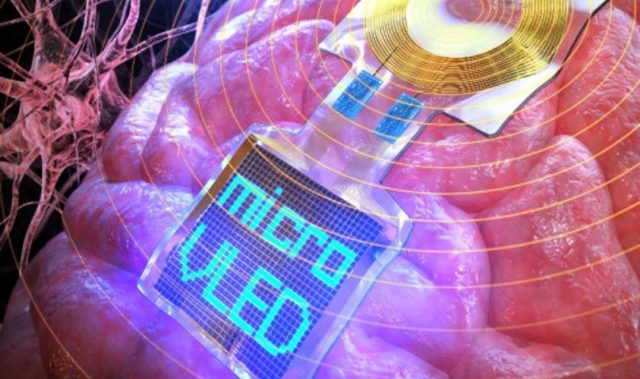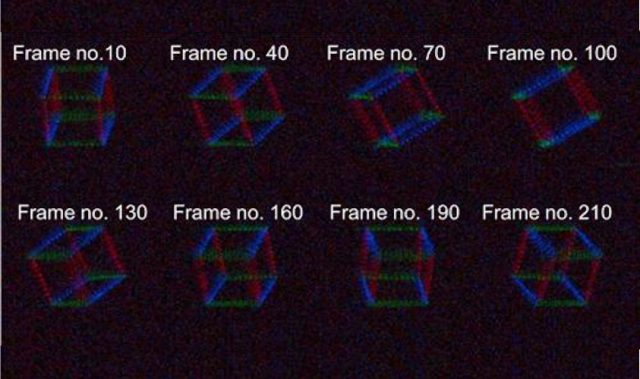
AsianScientist (Feb. 12, 2018) – A team of scientists at the Korea Advanced Institute of Science and Technology (KAIST) has developed flexible micro LEDs that can be used to control mouse behavior with light. They published their findings in Nano Energy.
Flexible micro LEDs are strong candidates for next-generation displays due to their ultra-low power consumption, fast response speed and excellent flexibility. However, earlier micro LED technologies had critical issues such as poor device efficiency, low thermal reliability and the lack of interconnection technology for high-resolution micro LED displays.
In the present study, a research team led by Professor Lee Keon Jae and Professor Kim Daesoo at KAIST has developed flexible vertical micro LEDs (f-VLEDs) using a method known as anisotropic conductive film-based transfer and interconnection technology. These f-VLEDs achieved optical power density (30 mW/mm2) three times higher than that of lateral micro LEDs, improving thermal reliability and lifetime by reducing heat generation.
f-VLEDs can also be applied to optogenetics for controlling the behavior of neuron cells and brains. In contrast to the electrical stimulation that activates all of the neurons in brain, optogenetics can stimulate specific excitatory or inhibitory neurons within the localized cortical areas of the brain, which facilitates precise analysis, high-resolution mapping and neuron modulation of animal brains.
The researchers thus inserted the f-VLEDs into the narrow space between the skull and the brain surface and succeeded in controlling mouse behavior by illuminating motor neurons on two-dimensional cortical areas located deep below the brain surface.
“The flexible vertical micro LED can be used in low-power smart watches, mobile displays and wearable lighting. In addition, these flexible optoelectronic devices are suitable for biomedical applications such as brain science, phototherapeutic treatment and contact lens biosensors,” said Lee.
Lee has established a startup company (FRONICS Inc.) based on micro LED technology and is seeking global partnerships for commercialization.
The article can be found at: Lee et al. (2018) Optogenetic Control of Body Movements via Flexible Vertical Light-Emitting Diodes on Brain Surface.
———
Source: Korea Advanced Institute of Science and Technology; Photo: Shutterstock.
Disclaimer: This article does not necessarily reflect the views of AsianScientist or its staff.












